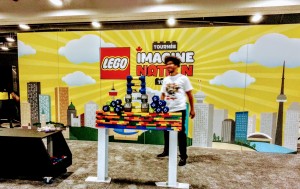At times, I feel like I am living in a mini lab where I manage a small team of constant experimenters. Last year, I took my team to a Lego exhibition where there was an interactive bridge building competition. Each team was commissioned to construct and design their own bridge out of Lego blocks (Duplo) with the objective that it would be able to withstand as much weight as possible. The judges walked around slowly examining and loading dumbbells on top of each bridge as the teams went to the front. One team impressively got to above 90 pounds!
As my team was building their bridge, I tried explaining to them what fault lines were and why we didn’t want any in our bridge (my engineering background coming up). They didn’t like that I was ‘telling them what to do’ and didn’t want to listen to my suggestions. So, I left them to do it their way. Within 10 seconds of my team setting their bridge up on the stands for the judges to test – their structure started falling apart without ANY weight. Embarrassed, one team member came up to me after our turn and said, “now I know what you mean about fault lines”. They picked up the pieces of their broken bridge and smiled as they posed for a picture of their efforts.
Keep in mind that the team who was up two teams before mine cried when their bridge broke.
What was the difference between these two teams you might ask? I knew my team was making a mistake and allowed them to have this learning opportunity. I guided them as much as I could and for as long as they would receive it. When things didn’t go well they knew what happened and they owned their mistake. Now when they run into a similar situation, it is a guarantee that they won’t make this mistake ever again. They showed their resilience in the face of failure and in the process, became more resilient as a result of not allowing failure to define them.
So, how do you know when to let your team be? When to let them make mistakes and when to push your ideas? For me, it came down to asking myself what could be the worst that could really happen? In this situation, I determined that there was greater value in the lessons learned than in winning the exercise.
When we decide to set aside our fear of failure and arise to the challenges of new experiences, therein lies our greatest opportunities for developing and manifesting resilience.

